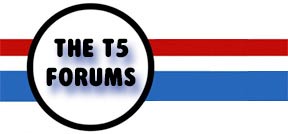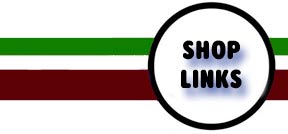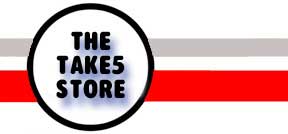Laser vs Inkjet vs Dye Sub: Quick Buying Guide
The printer market is constantly in a state of change – new models are always coming out – and usually with brilliant names like XTS-4320 which replaced the XTS-470 … but of course, you knew that. The main reason is they don’t really want you to remember the model number, just the brand name.
But inkjet, laser or dye sub – what’s what and why? Related to our current blog posts about running your own business (Part II will be up Friday morning) – what is the best choice for a home office or a small business?
One thing – before you begin – please switch to 24lb paper and stop using the practically see through 20lb paper? It holds ink much better – Costco will sell you 750 sheets for $6 dollars so we’re not talking about breaking the bank here. It’s also classier and is a nice small touch … okay, maybe not if you’re in the bail bond business 🙂
INKJET PRINTERS
Of course, a choice everyone knows as they practically give them away. Not only do you get them free with a computer purchase, I’ve actually seen one at Long’s Drugs for $20. An inkjet printer is aptly named, it essentially shoots out/jets out ink through a tiny nozzle, the finer/smaller the nozzle, the better resolution you get. Of course, as we all know, inkjet ink is apparently made of some sort of rare moon chemicals because it costs more than blood, okay, the reality is it’s all just clever rigging on their part – how something so mundane can cost more than Chanel #5 or Dom Perignon champagne per ounce. So even though the printer themselves are practically free, you have to weigh their TCO (Total Cost of Ownership).
At the lowest of the low are the Dell’s and Lexmark’s that hardly anyone willingly pays for them – at least no more than $25 dollars. They are serviceable black & white inkjets* if you only print a couple pages per week or you’re in a business where you can print something a few pages out, bundle them in a folder and charge $250 as a fee. I think you know who you are 🙁 or 🙂 . Then hey, what do you care what the ink really costs.
*Yes, technically they are color but they are really only acceptable for color charts and not photos.
I’m NOT knocking all inkjet printers, when you step up to an Epson, HP, Canon and now Kodak’s – and you match up their ink with their paper, the results can be pretty amazing. Remember to get nice results with printing a color photo, use color photo paper – you don’t have to go all out and get the PREMIUM color photo paper but at least get the color photo paper, it makes a huge difference because it’s designed to absorb ink correctly. When you print color using cheap 20lb paper, ink just seeps across the page – also make sure you change your print settings to “let the printer know” you are using better paper.
UNDER $100
Your basic solid working inkjet printer – any of the major brand names should do. You’ll get acceptable results – if you want better color, stick with Epson, HP or Canon.
UNDER $200
Better resolutions – personally, I prefer the Epson’s but there are many fans of the Canon and HP’s. Kodak is a new comer into the inkjet market. If you need to print CD’s or DVD’s (way better than labels and classier), the Epson’s couldn’t be easier to use – you get dedicated software and a special tray – it’s practically foolproof. Of course, if you need hundreds or thousands of self printed CD/DVD’s – then you should step up to a dedicated printer but if you just want a few at a time, the Epson’s are great.
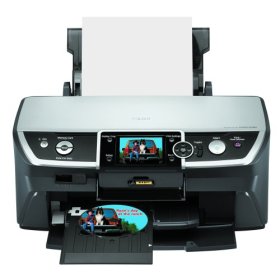
UNDER $300
Dedicated photo paper inkjet printers or wider formats. Or wifi/network versions.
OVER $300
Really beyond $300, Epson is the only major player with its assortment of printers dedicated to creative printing needs from wide format to special grayscale blacks for monochrome, varnish options – and Epson’s specialty paper with acid free paper to last 100 years.

ALL-IN-ONES
They range in price from $99 to $400-$500 dollars. While they are tempting, unless you work in a tiny workspace where the difference is whether you can turn around, I would caution against the INKJET versions – why? I think they are a compromise, you basically get a weaker printer, a weaker scanner, a weaker copier and you pay the most for ink – all while compromising on quality throughout. They are a solid option for normal home use but for a SoHo or small business, tempting, all in one nice package – but careful on your TCO and how your printouts represent you.
Another disadvantage to inkjets is that if you don’t use the ink on a semi-weekly basis, it might dry out so if you don’t really need a lot of color printing but you want it handy, you might consider a color laser or dye sub printer. And really, if you print out more than 10 sheets a day in black & white only, you should just step up to a laserprinter – the worst thing is watching a FAX header coming through with a giant half-page black bar band at the top knowing they just used up about 40% of your black ink to print a pointless thing. Most inkjet cartridges can give you about 120-150 pages while most laser cartridges can give you up to 2,500 printouts for about the same cost in ink/toner.
But if color photographs are your bread and butter – only inkjet offers you the variety and color controls.
TrustedReviews did a 12-page … 12 long page review of inkjet refills & branded paper so if you’re interested, it’s a great geeky read.
Also note – Kodak is trying a new scheme where they charge you more for the printer but charge you less for the ink – the initial reviews are that you pretty much end up at the same crossroad in terms of TCO – so HP is matching them in lowering the cost of the ink cartridge EXCEPT that (no shocker) you get way less ink so don’t go by price alone. From the NY Times, “The thrust of H.P.’s new pricing scheme is that starting with its spring 2007 printer models, each ink will be available in two cartridge sizes: standard and XL. The smaller size will cost less than H.P.’s current cartridges, but also contain less ink. H.P. says that by lowering the upfront cost, the new “standard” cartridge will benefit people who don’t print much. And yet, as Kodak points out, H.P. has actually managed to increase the ink’s cost per page. H.P.’s new XL tanks, on the other hand, hold three times the ink of the standard ones — but cost twice as much.”
And yea, like we need yet another thing in our lives that takes way too much of our gray matter …
Laser Printers
I’m not going to go into the whole detail of describing the entire laser printing process – you can read it on your own time but the most important thing to note is that it saves you money – definitely in black & white/text printing.
In the laser printer market, you have a wider variety of brands and choices – HP leads here also but you have other brands that are just as good – depending on your needs. You can get a rock solid personal laser printer for around $100, if you need an Ethernet ready, here’s a good choice from Brother for around $250. Or a very nice looking Canon all in one for under $200. Or a color laser from Ricoh for about $300.
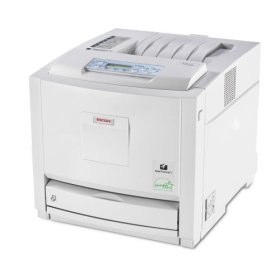
The only real key you need to answer is how many sheets you think you’ll need to print each month (color or just b&w) look for ONE key spec & its cost. Look to see how much the replacement drum costs AND after how many sheets they recommend – if it’s a $100 printer, it’s not that you’ll spend $80 to replace the drum but if you want to print 100 sheets a day and one unit reasonable expects the drum to last you the year, that might be a better deal for $50 more than another one that recommends replacing the drum earlier (like ‘belts’ on your car, they could go early or last forever).
The other cost are the estimated page count of the cartridge included (many laser printer companies sell you a “starter” cartridge that holds/prints less than their regular cartridge – as least they tell you upfront). What are the costs of the replacement cartridges (plural if color) So, if you guess how many sheets you want to print out in color & b&w, a more expensive printer with a longer drum life and more estimated sheets might be a better deal versus buying replacement cartridges faster. Again, factor in your TCO.
Keep in mind that laser color is nice but it’s not nearly as accurate as the best inkjet printers on premium color paper so if you need photos of street signs, color laser is fine – wedding photographer? No. If you’re printing out web pages, color laser is fine but an art gallery? Color laser is probably not fine enough.
Dye Sublimation Printers
Another choice that might be better known to creatives – it would be tough for me to top this encapsulation of why you might choose dye sub over inkjet from Wikipedia. Or from ShortCourses on some other choices for those in the creative field. If after reading these, it sounds like a better color fit for your field, read some reviews on DPRreviews and decide on which brand you want to pursue. It will take more effort as dye sub is generally not available at most consumer photo places but if you want rich, vibrant colors that leap off the page – dye sub is a great way to go.
BTW, off-topic sidebar reading – how you leave an electronic trace with each printout …
Office Printers
Beyond the home, SoHo or small office printers discussed, there are of course, the next steps up office copiers/printers and all in ones … they tend to be divided by page-per-minute printout counts as to what group they belong in … ranging from 14 pages per minute (ppm), 14-20 ppm, 21-30 ppm, 31-44 ppm, 45-69 ppm and 70-90 ppm. If you need to scale up, there are dozens of salespeople more than happy to call on you.
SUMMARY:
For a SoHo or small office, you just want to be sure you’re not overspending for ink especially if all you’re doing is printing something out and putting it in a file folder and putting it in storage 6 months later but on the other hand, you don’t want to skimp when it come to presenting yourself in the best light possible by not using better paper or thinking the color is ‘good enough’ from a free inkjet printer.
This guide is a general guide to get you started and help you focus on what type you should be looking for. Then of course, investigate and read reviews from some of the places linked above and if you’re sticking with general models available everywhere, check out search engine roundup for some of the best price/shopping search engines.
Good luck!


